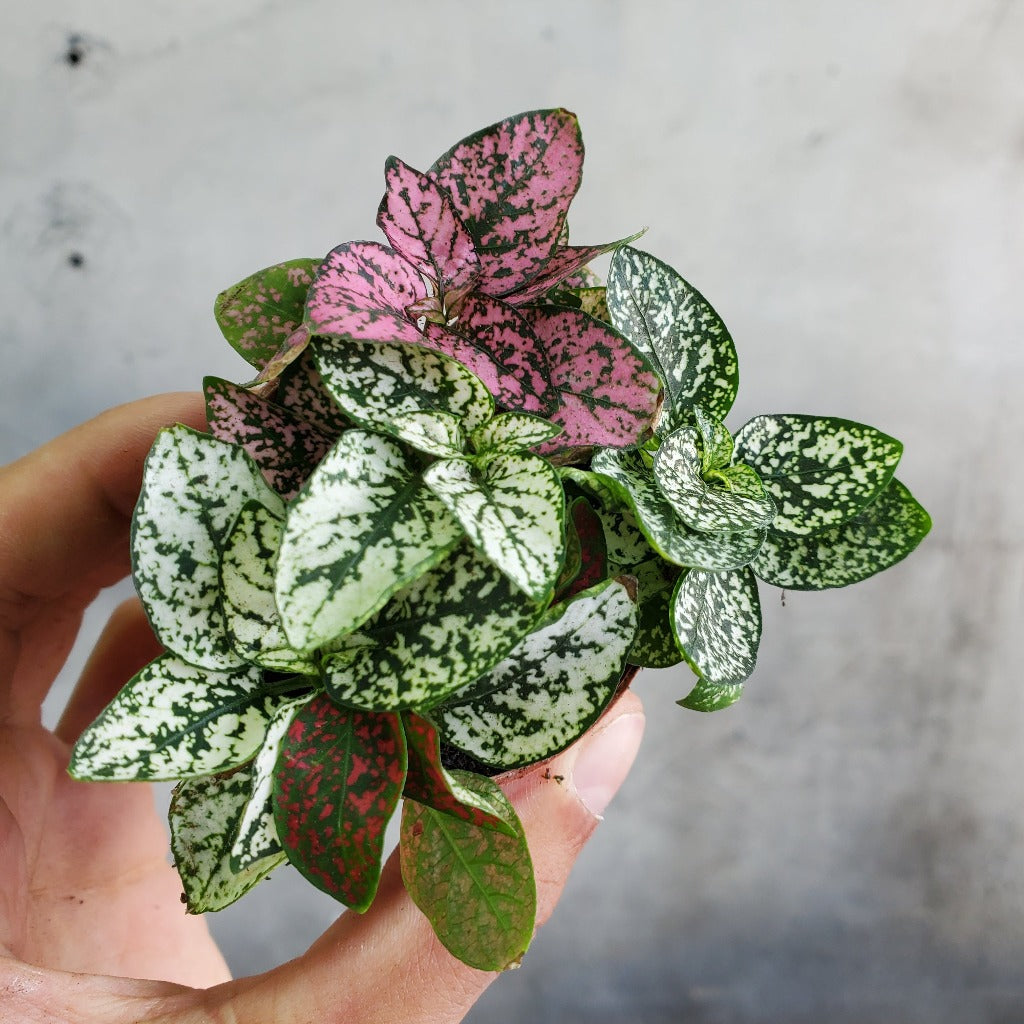Polka Dot Plant: A Colorful Addition to Your Home
Origin and Characteristics

Polka dot plants are native to Madagascar and tropical Africa. They are known for their compact size, typically reaching a height of around 12 inches (30 cm). The most striking feature of these plants is their foliage, which is covered in irregular spots or dots of various colors, including pink, red, purple, white, and green. The color intensity and pattern of the spots can vary depending on the plant variety and growing conditions.
Growing Conditions
To ensure healthy growth and vibrant foliage, polka dot plants require specific growing conditions:
:max_bytes(150000):strip_icc()/grow-hypoestes-phyllostachya-indoors-1902650-01-142be1b46981445f8b8425c65ed2b514.jpg)
Light: These plants thrive in bright, indirect light. Avoid exposing them to direct sunlight, as it can scorch the leaves.
Care and Maintenance
Fertilizing: Feed your polka dot plant with a balanced liquid fertilizer during the growing season (spring and summer). Dilute the fertilizer to half strength and apply it once a month.

Common Problems
Pests: Polka dot plants can be susceptible to common houseplant pests, such as aphids, mealybugs, and spider mites. If you notice any pests, treat them with insecticidal soap or neem oil.
Conclusion
Polka dot plants are a beautiful and relatively easy-to-care-for addition to any home. With their vibrant foliage and compact size, they can bring a touch of color and personality to your indoor space. By providing the right growing conditions and following proper care practices, you can enjoy the beauty of these charming plants for years to come.
FAQs
1. Can polka dot plants grow outdoors? While they can tolerate outdoor conditions during the warmer months, polka dot plants are generally best suited for indoor cultivation. They are sensitive to frost and cold temperatures.
2. How often should I mist my polka dot plant? Misting your polka dot plant regularly can help maintain humidity levels. Aim to mist the leaves once or twice a week, especially during dry weather.
3. Can polka dot plants bloom? While polka dot plants rarely bloom indoors, they may produce small, inconspicuous flowers under ideal conditions.
4. What should I do if my polka dot plant’s leaves are turning yellow? Yellowing leaves can indicate overwatering, underwatering, or nutrient deficiency. Check the soil moisture and adjust your watering schedule accordingly. If the problem persists, consider fertilizing the plant.
5. Can polka dot plants tolerate low light conditions? While polka dot plants prefer bright, indirect light, they can tolerate low light conditions to some extent. However, the foliage may become less vibrant and the plant may grow leggy.